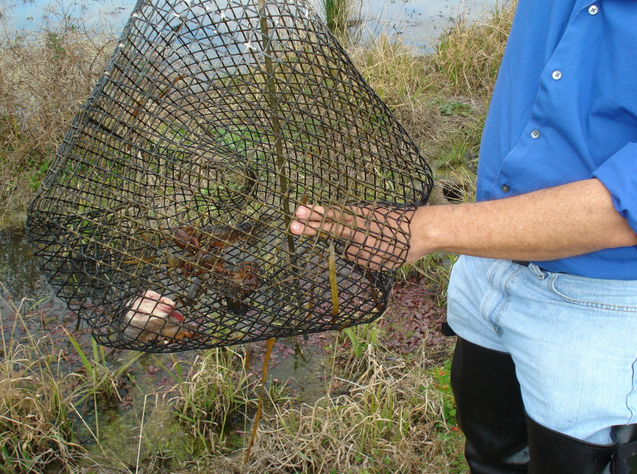Making a Crayfish Trap That Works
Building the Trap
The best material to use is chicken wire that has holes about an inch in diameter. This will give you the structural strength that you need while also providing enough flexibility to manipulate the metal as you are building the trap. It will also be lightweight and easy to transport in the future as well. The trap should be anywhere from two to three feet in length and at least a foot in diameter. Make sure that you are cutting off a sheet of wire that will reach these dimensions.
Gently roll your sheet and attach the ends together with a tie in the center. Continue to place ties every couple of inches until you get to about three or four inches from each end. Don’t leave any holes along the seam. Press on the trap so that it takes on the shape of an oval instead of a circle. Fold in the ends and tie them together in the center. Leave one end open for the moment. The goal is to create a trap that resembles the shape of a large pillow.
The next step is to create funnel-shaped indentations on the corners of each of the ends (four in total). Do this by pressing the corners inward until they are a few inches inside of the trap. Next, you want to cut or bend one of the wire holes so it is about three inches in diameter. This is the entry point where the crayfish will wander into the trap and get to the bait. Once you have created the funnels on the bottom end, you can seal off the seam by placing ties every couple of inches.
You also want to create two funnel-shaped entry points on the top end as well, but you also want to create a type of doorway so that you can add bait or remove crayfish easily. You can always just tie them off and clip off the ties when you need access, but it’s just as easy to just make a hook clasp with some extra chicken wire that can be released and reattached. Place a plastic tie next to each of the funnels to secure their shape, and then place a clasp or two along the seam. Just make sure that there are no openings for the crayfish to escape once the trap has been closed and placed into the water.
Using the Trap
Bait the trap by placing a large chunk of fish or other product into the center of the trap and seal the trap door. Tie a rope around the center of the door seam. You can use any length of rope, depending on where you set the trap and how much you need to pull it back to shore. You also want enough rope to be able to secure it to a tree or other object along the shore to prevent the current from taking it away.
As long as there are crayfish in the area, they will migrate to the bait, enter the trap through the funnels and get caught. They will not have enough space to escape through the holes as long as they are only about three inches in diameter. Check on the trap every few hours, and you may need to leave it overnight when the crayfish are most active. Try to keep only what you need and release the rest so that crayfish don’t die in the trap unnecessarily.


